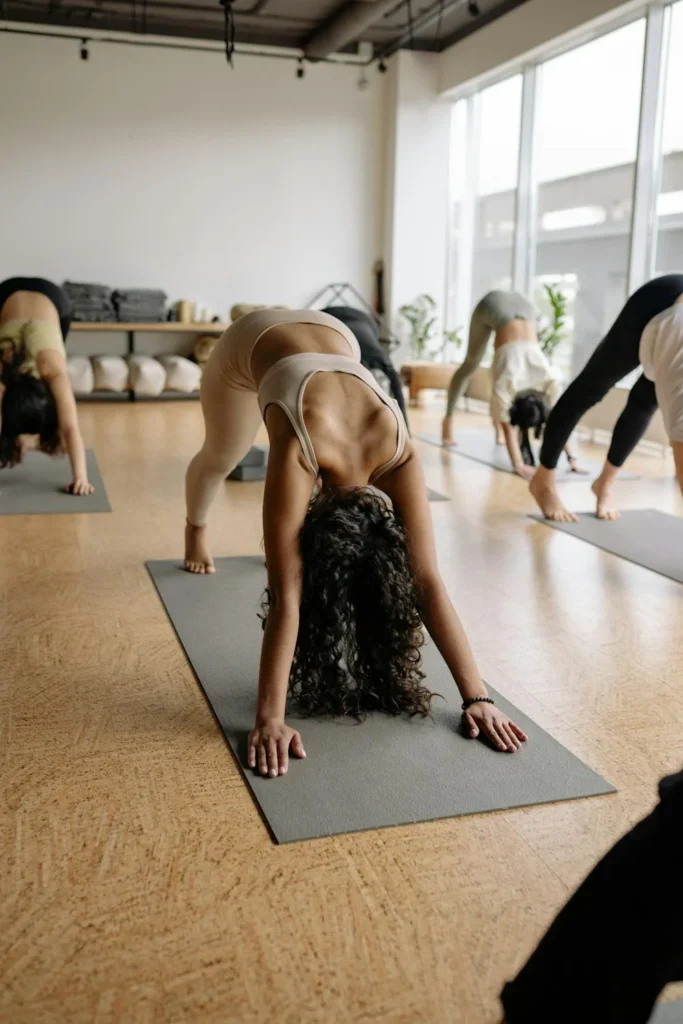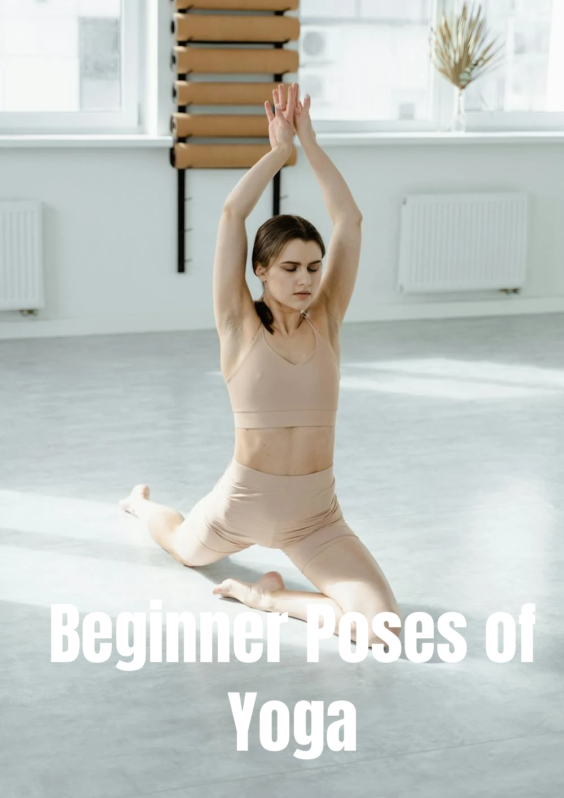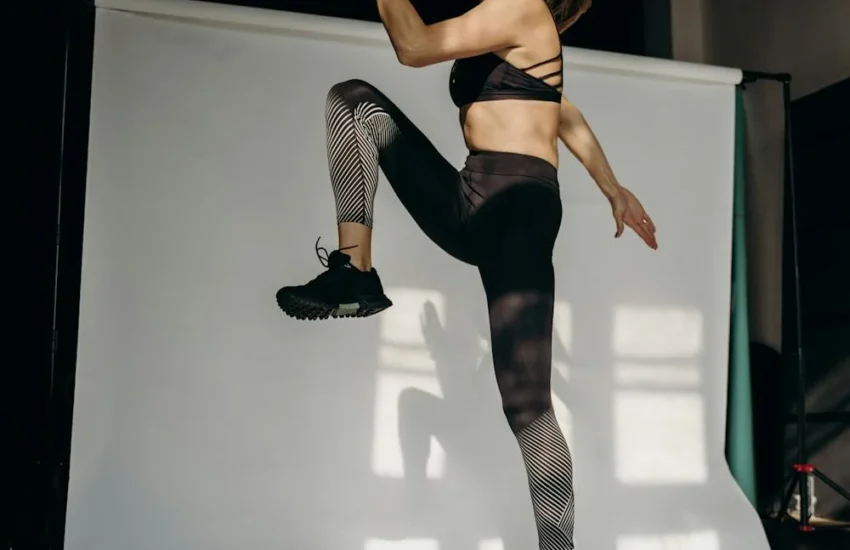10 Effective Beginner Poses of Yoga
Beginner poses in yoga include the Mountain Pose and the Downward Facing Dog. These foundational poses build strength and flexibility.
Yoga, an ancient practice rooted in Indian philosophy, has gained immense popularity worldwide for its holistic approach to health and wellness. Starting with beginner poses, yoga offers a gentle introduction to the physical and mental discipline required for more advanced practices.
The Mountain Pose (Tadasana) and Downward Facing Dog (Adho Mukha Svanasana) are perfect for those new to yoga, helping to establish core strength, improve posture, and introduce the concept of mindful breathing. Engaging in these poses regularly can lead to noticeable improvements in overall flexibility, stress reduction, and a sense of balance in life. For anyone looking to embark on a journey towards better health and inner peace, mastering these beginner poses of yoga is an essential first step.
:max_bytes(150000):strip_icc()/Yoga-Poses-for-Beginners-Social-GettyImages-961084648-9a458aac66a24999b57b387a8ddfd061.jpg)
Benefits Of Yoga
Yoga is a treasure trove of wellness for both the mind and body. Even as a beginner, diving into yoga poses can unlock numerous health benefits. These practices improve strength, flexibility, and balance. They also help calm the mind and reduce stress. Let’s explore how starting yoga can lead to a healthier, happier life.
Physical Health
Starting yoga brings a wealth of benefits to your physical health. Simple poses lay the foundation for a stronger and more flexible body. Here’s how:
- Increases flexibility: Gentle stretching through beginner poses helps loosen tight muscles, making everyday movements easier.
- Builds strength: Poses like Plank and Warrior engage multiple muscle groups, enhancing overall body strength.
- Improves posture: Yoga encourages alignment, training the body to stand and sit straight, which is vital for spine health.
- Boosts balance: Standing poses challenge your balance, which is key for preventing falls as you age.
These physical perks come together to craft a healthier you. For instance, consider how yoga aids in weight management:
| Yoga Pose | Calories Burned |
|---|---|
| Sun Salutations | 150-200 per 30 minutes |
| Downward Dog | 50-100 per 10 minutes |
Values are estimates and can vary based on intensity and individual effort.

Mental Clarity
Yoga’s impact extends well beyond physical health. It brings a sense of mental clarity and peace. Consider these points:
- Reduces stress: Yoga includes breathing exercises that help soothe the nervous system, melting away stress.
- Enhances focus: As you concentrate on each pose, your mind learns to focus on the task at hand, improving attention span.
- Promotes relaxation: Through mindfulness and meditation, yoga teaches relaxation techniques effective for calming the mind.
- Improves mood: Yoga increases serotonin levels, known as the happiness hormone, which lifts your spirits.
Regular practice leads to a sharper mind and a more relaxed demeanor. Here’s a snapshot of how yoga supports mental well-being:
| Mental Benefit | Description |
|---|---|
| Mindfulness | Being present in the moment, aware of your body and breath. |
| Concentration | Improved ability to focus on tasks and reduce distractions. |
Embrace yoga and you will discover a path to a clearer, more focused mind. It’s a journey worth taking, with each pose leading to newfound clarity.
Essential Equipment
Starting your yoga journey can be exciting and a bit daunting. But fear not! A few key items will set the stage for a smooth and comfortable practice. Essential equipment like a good yoga mat and comfortable clothing can make all the difference. These items support your body, help prevent slipping, and allow for freedom of movement. Let’s explore what you’ll need to begin your yoga poses with confidence and ease.
Yoga Mat
A yoga mat is your foundation for practice. It provides cushioning and prevents your hands and feet from slipping. Here’s what to consider when choosing one:
- Thickness: A standard mat is about 1/8 inch thick. Thicker mats, up to 1/4 inch, offer more cushion for joints.
- Material: Mats are typically made of PVC, rubber, or eco-friendly options like jute or cork.
- Texture: A textured surface ensures better grip.
- Size: Standard mats are around 68 inches long. Taller individuals may prefer longer mats.
Consider the pros and cons:
| Thickness | Pros | Cons |
|---|---|---|
| Standard (1/8 inch) | Lightweight, more stability for standing poses | Less cushioning for knees and elbows |
| Thick (1/4 inch) | Better cushion, comfortable for seated poses | Heavier, may compromise balance |
Care is simple. Wipe your mat with a damp cloth after use, and let it air dry. Roll it up and store it away from direct sunlight. A good mat supports your yoga journey, making each pose better.
Comfortable Clothing
What you wear can affect your yoga experience. Clothes should be stretchy and snug but not too tight. They should allow your skin to breathe and move with your body. Here are some tips:
- Fabrics: Look for moisture-wicking materials to keep you dry.
- Fitting: Ensure clothes are snug enough to stay in place but not restrict movement.
- Layers: Wear layers to adjust for temperature changes during your practice.
Here’s a simple guide for choosing the right clothing:
| Item | Why It’s Good |
|---|---|
| Leggings or Shorts | Freedom of movement, visibility of knees and ankles for alignment |
| Fitted Top | Stays in place during inverted poses, provides coverage |
| Sports Bra | Support for all postures, essential for females |
Remember to remove accessories like watches and jewelry. These can get in the way and even cause injury. Comfortable clothing allows you to focus on your poses, not your outfit. You’ll feel free and at ease, ready to enjoy your yoga practice.
Mountain Pose
Yoga is great for everyone. It makes us strong, calm, and flexible. One easy pose is the Mountain Pose. It looks simple but is very powerful. It helps us stand tall and feel grounded.
Alignment Tips
Standing right is key in Mountain Pose. Let’s make sure we do it correctly. First, stand with your feet together. Feel the floor with your toes and heels. Keep your legs straight, but don’t lock your knees. Imagine a line pulling you up from your head. This makes you stand tall and straight.
- Feet: They should be together. If that’s hard, a little space is okay.
- Legs: Keep them straight but relaxed.
- Arms: Let them hang by your sides. Palms should face forward.
- Shoulders: Roll them back and down. This opens your chest.
- Head: Keep it level. Your chin should be parallel to the ground.
Imagine a string pulling you up from the top of your head. This helps you stay tall and strong.
Common Mistakes
Even though Mountain Pose seems easy, mistakes can happen. Knowing them helps us do better. One common mistake is not spreading the toes. This helps with balance. Another mistake is slouching. Standing tall makes the pose work well.
- Not spreading toes: This makes balance harder. Try to spread them wide.
- Locking knees: This can hurt. Keep knees a little soft.
- Forgetting to breathe: Deep breaths make the pose stronger.
- Slouching: This makes the pose less effective. Stand tall.
- Looking up: This strains the neck. Keep your head level.
Remember, practice makes perfect. Keep trying, and you will get better at it.
Downward Dog
Are you ready to embark on a yoga journey? Begin with the Downward Dog, a foundation pose that stretches and strengthens the body. This pose is great for beginners. It helps to relieve back pain, and improve posture. With regular practice, you’ll feel stronger and more flexible.
How To Enter
Entering the Downward Dog may seem tricky at first, but with these steps, you’ll master it in no time:
- Start on your hands and knees. Make sure your wrists are under your shoulders and your knees under your hips.
- Lift your hips up and back. Imagine your body forming an inverted ‘V’ shape.
- Press your hands into the ground. Spread your fingers wide.
- Keep a slight bend in your knees. If you can, straighten them to deepen the stretch.
- Push your heels down. It’s okay if they don’t touch the ground.
- Relax your head and neck. Your ears should be in line with your upper arms.
Remember, your body may not fully enter the pose right away. Give it time and practice regularly.
| Body Part | Action |
|---|---|
| Hands | Press down firmly, spread fingers |
| Hips | Lift up and back |
| Heels | Push down towards the floor |
| Head | Relax and let hang freely |
Breathing Techniques
Proper breathing is vital in yoga. It helps you stay focused and energized. In Downward Dog, follow these breathing tips:
- Inhale deeply through your nose. Fill your belly with air.
- Exhale slowly through your nose. Push all the air out.
- Try to make your inhales and exhales the same length.
- Keep your breath smooth and even throughout the pose.
Focus on your breath. It should be calm and steady. This will help you hold the pose longer and with ease.
Breathing right can turn a simple pose into a powerful mind-body experience. Practice this technique:
- Breathe in for a count of four.
- Hold your breath for a count of four.
- Breathe out for a count of four.
- Pause for a count of four before your next inhale.
Repeat this cycle throughout the pose. It will help you feel more grounded and relaxed.
Child’s Pose
Yoga opens a world of calm and flexibility for beginners. Among the first poses to master is the Child’s Pose. This restful position stretches your back, hips, thighs, and ankles. It is ideal for resting and re-centering during your yoga practice. The pose is like a warm hug for your body and can help in releasing tension.
Modifications
While the Child’s Pose may seem simple, everyone’s body is different. Modifications can help make the pose comfortable for various body types. For instance:
- If your forehead doesn’t reach the floor, try placing a yoga block or folded blanket beneath it.
- For tight hips or knees, widen your knees apart to create more space for your torso.
- If you have discomfort in your knees, pad them with a blanket or use a folded yoga mat for extra cushioning.
Consider these adjustments to customize the Child’s Pose to your needs:
| Issue | Modification |
|---|---|
| Ankle Discomfort | Place a rolled towel under the ankles. |
| Neck Strain | Keep your head in a neutral position with a gaze down. |
| Shoulder Tightness | Extend your arms alongside your body, palms up. |
When To Use
The Child’s Pose is a versatile tool in your yoga practice. Use it to relax and stretch at any point. Here’s when it’s particularly effective:
- Between challenging poses: It offers a moment of respite.
- After backbends: It helps neutralize the spine.
- Before bedtime: It calms the mind and body.
Consider incorporating the Child’s Pose into your daily routine with these ideas:
- Start your morning with a few minutes in the pose to set a peaceful tone for the day.
- Take a short break from work or study to relieve back and neck tension.
- End your day with the pose to unwind and encourage restful sleep.
Remember, the Child’s Pose is not just a beginner’s rest stop; it’s a deeply restorative station for yogis at all levels.
Related Article: Say Goodbye to Sleepless Nights with Yoga for Better Sleep
Cat-cow Stretch
Yoga is great for beginners. One easy pose is the Cat-Cow Stretch. It helps your back and feels good. Let’s talk about how it works and why it’s great for your spine.
Flowing Movement
The Cat-Cow Stretch is a simple move. You start on your hands and knees. This pose has two main parts: the Cat pose and the Cow pose. Let’s see why this flowing movement is so good:
- It warms up your body: Moving between these poses gets your body ready for more yoga.
- It teaches you to breathe: You breathe in for Cow and out for Cat. This helps you focus.
- It’s gentle: Anyone can do it, even if you’re new to yoga.
Here is a simple way to remember the flow:
| Position | Breath | Action |
|---|---|---|
| Cat | Breathe out | Arch your back up |
| Cow | Breathe in | Drop your belly down |
This back-and-forth movement is like a gentle wave. It makes your spine happy and ready for the day.
Spinal Benefits
The Cat-Cow Stretch is super good for your spine. Here’s why:
- It makes your spine strong: Moving like this strengthens your back.
- It helps with back pain: If your back hurts, this stretch can make it feel better.
- It keeps your spine flexible: A flexible spine is a healthy spine. This stretch helps a lot.
Think of your spine as a string of pearls. The Cat-Cow Stretch helps each pearl move well. This is important for a healthy back.
Here’s a quick look at what each pose does for your spine:
| Pose | Benefit |
|---|---|
| Cat | Stretches the back of your spine |
| Cow | Stretches the front of your spine |
Doing the Cat-Cow Stretch every day can make a big difference. It helps your spine stay healthy, strong, and flexible.

Warrior I Pose
Exploring the world of yoga starts with mastering the basics, and one essential beginner pose is the Warrior I Pose. Also known as Virabhadrasana I, this pose is a foundation for strength and focus. It’s a powerful stance that builds confidence and poise, making it a favorite for those new to yoga.
Stance And Balance
Perfecting the Warrior I Pose begins with establishing a proper stance. This is crucial for maintaining balance and harnessing the full benefits of the pose. Here’s how to do it:
- Stand with your feet hip-width apart, arms by your sides.
- Step your right foot forward about 4 to 5 feet.
- Turn your left foot out at a 45-degree angle, keeping the heel grounded.
- Lift your arms overhead with palms facing each other, reaching actively towards the sky.
- Bend your right knee, making sure it’s directly over the ankle.
- Press into your feet, engaging the leg muscles and core for stability.
- Gaze forward, keeping your head in line with your spine.
Balance in Warrior I comes from a strong base and an even distribution of weight. Remember to keep breathing deeply as you hold the pose.
Strengthening Hips
The Warrior I Pose is an excellent way to build hip strength. It targets the hip flexors and the hip extensors, which are key to stability and mobility. Here’s what you need to know:
- The front thigh works to keep the knee in place, thus strengthening the hip flexors.
- The back leg’s glute muscles activate to support the hip extensors.
As you maintain the pose, focus on the following points for maximum hip strengthening:
- Square your hips to the front of the room, engaging the thigh muscles.
- Press the outer edge of your back foot firmly into the ground.
- Imagine drawing your inner thighs towards each other for added support.
Regular practice of the Warrior I Pose helps in improving hip flexibility, enhancing posture, and reducing tightness in the lower body. Embrace the stretch and strength that comes with this dynamic pose.
Seated Forward Bend
Yoga is a great way to improve flexibility, strength, and mental clarity. A key pose for beginners is the Seated Forward Bend, or Paschimottanasana. This pose stretches the spine, shoulders, and hamstrings. It calms the mind and helps relieve stress. Ideal for beginners, it lays the groundwork for a solid yoga practice.
Stretching Techniques
Mastering the Seated Forward Bend involves understanding the right stretching techniques. Here’s how to get started:
- Begin seated on the floor with legs extended forward.
- Keep your spine straight and toes pointed up.
- Take a deep breath and raise your arms over your head.
- Exhale, hinge at your hips, and reach forward towards your toes.
- If your hands reach your feet, grip your toes; if not, hold onto your shins or knees.
Keep these points in mind:
| Do’s | Don’ts |
|---|---|
| Keep your knees slightly bent if you’re tight in the hamstrings. | Avoid rounding your back. |
| Use a yoga strap around the feet if you can’t reach them. | Don’t strain to reach your feet. |
| Engage your abdominal muscles to deepen the stretch. | Skip the pose if you have any back injury. |
Remember, it’s about the journey, not the destination. Don’t push too hard; let the stretch deepen over time.
Focus On Breath
Breath is a key element in yoga, especially in the Seated Forward Bend. Here’s how to use your breath:
- Inhale deeply to prepare your body for the stretch.
- As you exhale, fold forward, extending from the hip joints.
- With each inhale, lengthen your spine.
- On each exhale, deepen into the pose, releasing tension.
Keep your breaths slow and even. Try counting to five for each inhale and exhale. This encourages a meditative state and enhances relaxation. Avoid holding your breath; it increases tension and hinders stretching. Instead, use your breath to guide and deepen your practice. A steady breath equals a steady pose.
Frequently Asked Questions
What Are The Easiest Yoga Poses For Beginners?
For beginners, the easiest yoga poses include the Mountain Pose (Tadasana), Downward-Facing Dog (Adho Mukha Svanasana), and the Child’s Pose (Balasana). These poses build foundation and flexibility.
How Often Should Beginners Practice Yoga?
Beginners should aim to practice yoga 2-3 times per week. Starting with shorter sessions and gradually increasing time allows the body to adapt without strain.
Can Yoga Improve Overall Flexibility?
Yes, regular yoga practice can significantly improve flexibility. Poses stretch and lengthen muscles, which can enhance mobility and reduce the risk of injury over time.
What Are The Health Benefits Of Yoga?
Yoga offers numerous health benefits including stress reduction, improved posture, increased strength and balance, and enhanced mental focus. It can also aid in better sleep and digestion.
Conclusion
Embracing the art of yoga can transform your life, starting with these basic poses. They lay the foundation for a healthier, more balanced you. Remember, consistency is key, and practice makes perfect. So, roll out your mat, strike a pose, and let your yoga journey begin.



